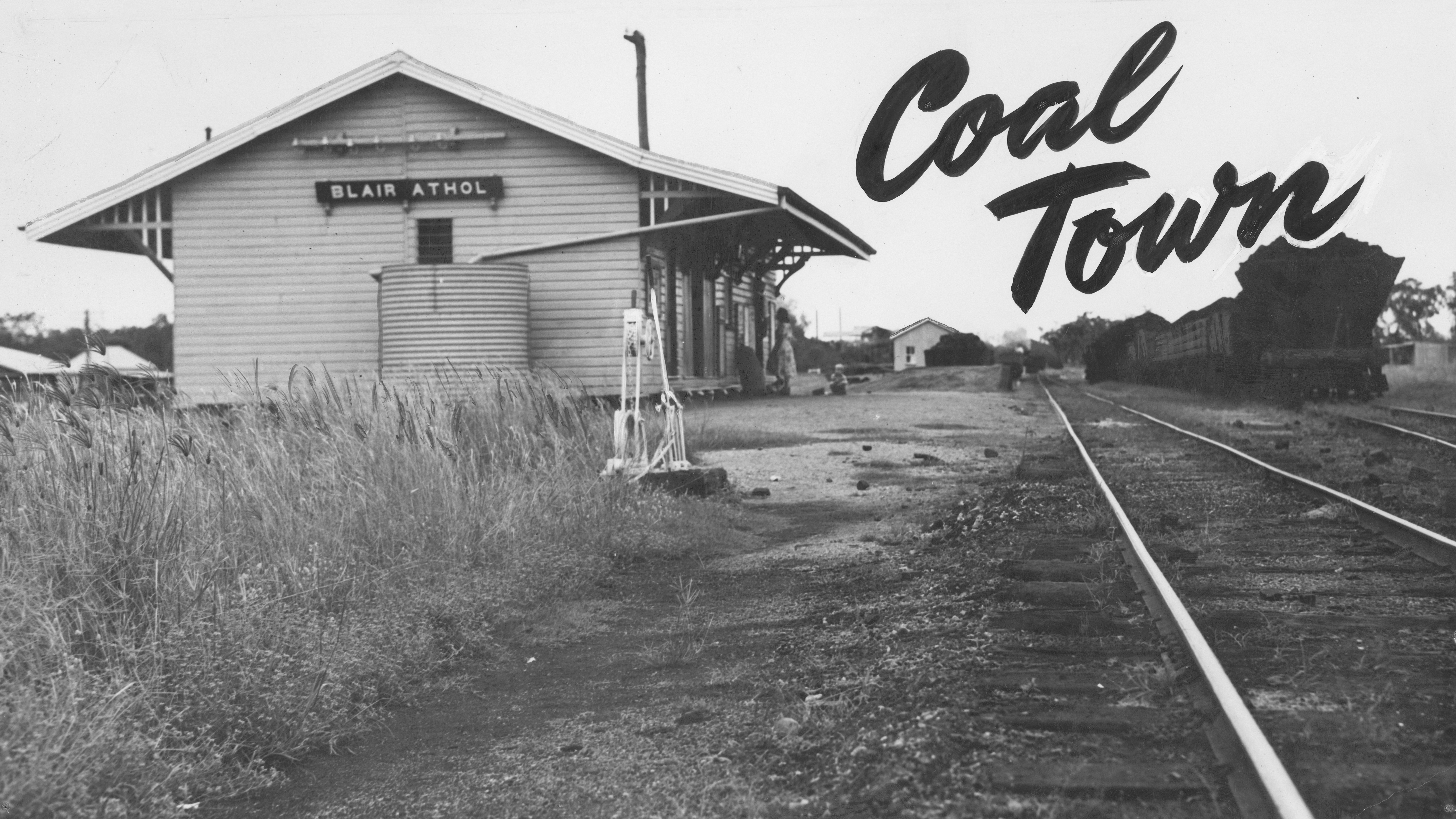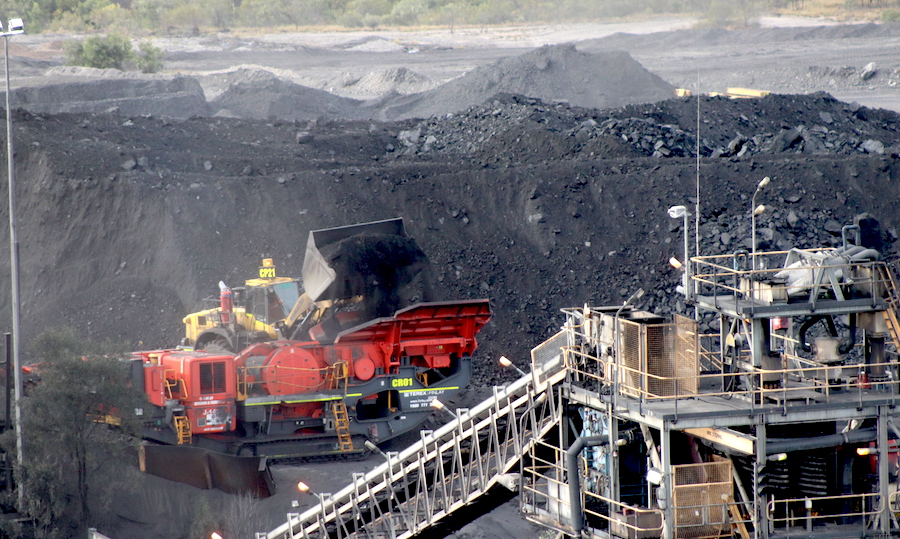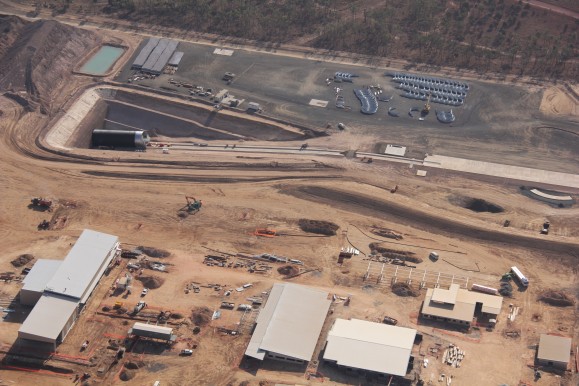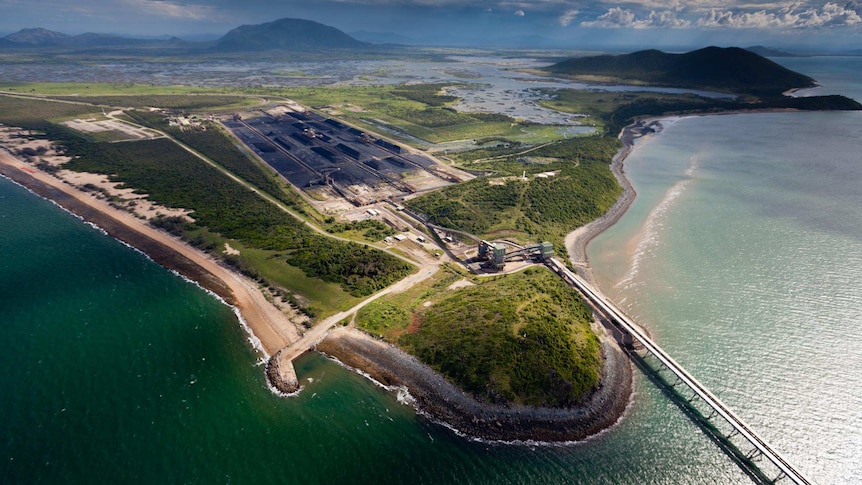Bowen Basin

In the year 1864, an Australian pastoralist named James McLaren went to dig a well. Upon sinking the shaft, however, he struck not water but a rocklike black substance instead. This accidental discovery would help bring about an era in whose grip Australia remains today — the age of coal.
The story of Queensland's coal begins during the Permian Period roughly 300 million years ago. One supercontinent, Pangaea, dominated the landscape; one superocean, Panthalassa, surrounded it. For a time, life flourished: this was the pivotal era when the forebears of today's reptiles and mammals began to diverge, while the first seed-bearing plants arrived on the scene. Then, about 250 million years ago, all came crashing down in the largest mass extinction of Earth's history. (The scientific evidence suggests that climate change, driven by geological releases of carbon dioxide, played a role.)
Over hundreds of millions of years, some of this biological detritus became the coal lying below the Bowen Basin of Queensland, Australia — and in the decades following McLaren and his well, it would see the light of day once again. By 1873, a local copper mining company had begun systematic exploration of the region's coal deposits. Energy systems change, they understood — as one local paper editorialized at the time, "the timber [for smelting] cannot last forever, and it is satisfactory to know that we have at hand an inexhaustible supply of the best fuel." By the turn of the century, a town and railroad had sprung up to support the mines. A few decades later, the town's miners discovered what was described at the time as "the thickest seam of clean black coal in the world."
McLaren had called the main building of his homestead Blair Athol, after the Scottish highland town where he had been born. He hadn't been the first to find coal in Australia, or for that matter in Queensland. But this cluster of deposits proved especially fruitful, and as coal mining metastasized throughout the region, the town of Blair Athol and its remarkable mine became an almost legendary embodiment of Queensland's energy economy.


From the beginning, this was a story of triumph and tragedy alike. Triumph, in that coal quite literally built modern Australia — and with more demonstrated black coal resources than any other state, Queensland proved a lynchpin in this emerging energy regime. By the turn of the century, the state was producing over 6 million tons a year of coal, and by 1930, it was some 10 million tons. The Clermont railway had been extended to Blair Athol by 1910, and the specific type of coal produced — medium-volatile bituminous, a mid-carbon variety largely used for smelting metal — made it especially useful in new markets.
And tragedy, in that this progress came at a great human cost. Land was lost, as vast swaths of Indigenous territory were consumed over the years by coal extraction (the Queensland government has been reported to extinguish native titles so as to allow mines to move forward; Blair Athol, for its part, sits upon land traditionally owned by the Wangan and Jagalingou people). Lives were lost, with Queensland bearing witness to many of Australia's greatest mining disasters. A sudden explosion on the morning of September 19, 1921 at the Mt. Mulligan Mine, which killed 73 workers, has gone down in history and popular memory as one of the worst. History itself was lost, as the march of time claimed even Blair Athol in turn. Following one last dance at the town hall, the town was wiped off the map to make way for a bigger mine in 1981. Though it helped build Australia, a massive hole in the ground is all that remains of its story.
 The legacy that began in the town, however, spread its roots around the region. One such offshoot, not too far from where McLaren first went looking for water, is another great Queensland mine: the Moranbah Grosvenor Complex. The first series of shafts, Moranbah North, began operations in 1996. The adjoining component, Grosvenor, began production in 2016. Together, the two Bowen Basin mines produce millions of metric tons of hard coking coal for metallurgy each year. To the human eye, they hardly look like part of the same story. The Blair Athol mine was dug in an open-pit style, where rocks are drilled, blasted, and excavated away to reveal resources close to the surface — the gash in the earth that forms the standard mental image of large-scale coal production. Unlike these mines of old, Grosvenor and Moranbah are longwall-style, where a small entry point hides kilometers-long underground tunnels.
The legacy that began in the town, however, spread its roots around the region. One such offshoot, not too far from where McLaren first went looking for water, is another great Queensland mine: the Moranbah Grosvenor Complex. The first series of shafts, Moranbah North, began operations in 1996. The adjoining component, Grosvenor, began production in 2016. Together, the two Bowen Basin mines produce millions of metric tons of hard coking coal for metallurgy each year. To the human eye, they hardly look like part of the same story. The Blair Athol mine was dug in an open-pit style, where rocks are drilled, blasted, and excavated away to reveal resources close to the surface — the gash in the earth that forms the standard mental image of large-scale coal production. Unlike these mines of old, Grosvenor and Moranbah are longwall-style, where a small entry point hides kilometers-long underground tunnels.
From a bird's-eye perspective, the extraction is concealed from view. But from space, methane doesn't lie: nearly every stage of the coal value chain, ranging from the initial boring of the mine to the processing for storage and transport, releases the potent greenhouse gas into the atmosphere. In a 2022 analysis of TROPOMI satellite data, Australia has more sites of methane ultra-emission than any other OECD country save the United States. And by one tally, Grosvenor and Moranbah release more greenhouse gasses than almost any other mines in Queensland.
After coal at the two mines is lifted from the tunnels, it moves by conveyor belt to a shared processing facility. There, it is transferred to the Goonyella railway line, built in 1971 to connect Bowen Basin mines to the coast. In a classic story of natural and built environments shaping each other, additional mines — like these — subsequently sprung up along its course. The rail corridor takes it to the Abbot Point Port in northern Queensland. From there, it enters a global web of economic interrelation. Since the 1950s, when the postwar industrialization of Japan drove new demand for metallurgical coal, Queensland's mining sector has been largely oriented around foreign export. Grosvenor is owned by Anglo American plc, a London- and Johannesberg-based multinational mining company with operations on every continent except Antarctica. Moranbah is owned by Anglo American in partnership with a few Japanese steel and coal conglomerates. Abbot Point is operated by Adani, the Indian energy conglomerate. As it leaves the mine and then the port, most of the coal eventually makes its way to markets in Japan, Korea, Taiwan, India, Brazil and Europe.

Just as in the case of its predecessors, tragedy is intertwined with the complex's success. In 2007, a miner was killed by a shuttle car. In 2019, another miner was killed in an underground collision. And in May 2020, a methane explosion gravely injured five workers. A government inquest found that the owners had failed to properly anticipate such a risk. No charges were filed, and 18 months later, the mine was fully back online.
To hear its owners tell it, the mines are here for the long haul: both, say Anglo American's reports, have at least two to three decades of good production left. It's no wonder that Australian coal exporters, sitting on record 2022 profits (results of global supply crunches and the invasion of Ukraine, among other factors), would think that the near term is rather bright; coal "isn't going anywhere," as the industry mantra goes.
Or is it? Conventional wisdom holds that steel is a "hard-to-abate sector," given the high capital costs and limited market penetration of low-carbon blast furnace technologies to date. Coking coal will likely hang on longer than thermal coal. Nevertheless, technological advances (like green hydrogen or perhaps molten oxide hydrolysis), coupled with nations' emissions-reduction obligations under the Paris Agreement (Japan's national climate plan targets its steel and iron sector specifically), are challenging this picture. Thermal coal demand seems to already be declining in the nation's traditional Asian export markets, and uncertainties are growing for these nations' metallurgical coal demands as well. Hopes for new market growth in China likewise remain speculative — the nation recently lifted its de-facto import ban on Australian coal, but demand forecasts are modest. Once a safe market, even metallurgical coal is an increasingly risky bet as the energy transition moves forward.
Present high prices, perhaps counterintuitively, may ultimately undermine the industry by hastening the destruction of demand. In the International Energy Agency's net-zero energy modeling, global coal consumption is set to fall by half between 2020 and 2030, and decrease nearly 90% by 2050. Post-2030, as Australia's central bank has warned, these global realignments create significant financial uncertainty — stranded asset risk, in the technical parlance — for the nation's coal export sector.
In the long run, will policy or economics scale down Queensland's coal sector first? That is, will intentional strategy shift the economy away from coal export reliance in a way that best serves communities on the front lines of the energy transition? Or will the specter of stranded assets become a reality, as market shifts drive a chaotic and hard landing for all? One need not wait for the long run to play out, however, to begin confronting Queensland's methane problem. The IEA has estimated that nearly 70% of the methane emissions from underground mines (the category to which Grosvenor and Moranbah belong) can be eliminated through existing technologies. Before it re-enters the atmosphere, the gas can be scrubbed from ventilated air and either oxidized or recovered — if, that is, the right economic and regulatory conditions make these abatement technologies viable. Australia has pledged to reduce its methane emissions by 30% within this decade. Whether it meets this target will be, in large part, a function of political choices moving forward.
Coal, said former Prime Minister Tony Abbott back in 2014, is "good for humanity," and it was former Prime Minister Scott Morrison who famously brought a lump of coal into Parliament. In the nation's May 2022 elections, a new coalition came to power with the declaration that "the climate wars are over." But with the government's specific climate commitments still unclear, it remains to be seen what the next few years hold for the Moranbah Grosvenor Complex, and the world. Mine by mine, site by site, methane leak by methane leak, will Australia be able to stem the flow of greenhouse gas and begin escaping coal's shadow?
The methane plumes over Queensland tell stories. This particular one carries within it a man's well, a town's memories, a nation's growth, and a world's economy. It is a story, that is to say, of Australia's past. Whether it is also one of Australia's future remains an open question.
